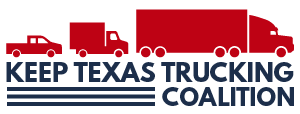Logistics Managment
Insurance rates for trucking fleets are soaring, sending trucking executives scrambling for coverage even for some of the safest fleets in the land. The reason, according to top trucking executives and transportation attorneys, is the rise in so-called “nuclear settlements” either awarded by a jury or negotiated by attorneys in a wrongful death lawsuit involving a heavy truck.
By John D. Schulz · January 17, 2020
Insurance rates for trucking fleets are soaring, sending trucking executives scrambling for coverage even for some of the safest fleets in the land.
The reason, according to top trucking executives and transportation attorneys, is the rise in so-called “nuclear settlements” either awarded by a jury or negotiated by attorneys in a wrongful death lawsuit involving a heavy truck.
The common definition of a “nuclear settlement” is about $10 million, although jury awards in wrongful death lawsuits involving trucks at times approach $20 million.
Whatever the precise figure, it is keeping some top trucking executives awake at night. They’re either figuring out better ways to keep their fleets safe or how to raise trucking rates high enough to afford skyrocketing insurance premiums.
“The excess liability has gone through the roof,” Chuck Hammel, president of Pitt Ohio, the nation’s 17th-largest LTL carrier, told LM. “The reason for this is the nuclear settlements being awarded for accidents. The excess market got very expensive—if you can even find coverage.”
Pitt Ohio has won the American Trucking Associations’ Presidents Trophy for safest fleet each year it was eligible for the past 26 years. But even Pitt Ohio’s fleet has felt the pinch of the hardening insurance market.
“Our safety experience has been exceptional yet our excess rates doubled,” Hammel explained. “I think other carriers will exit the market because of that. I also think some carriers will quit servicing or increase rates to certain states where nuclear settlements are more prevalent such as Texas and California.”
Carriers report that insurance premiums for long-haul trucking companies have basically doubled few years. The average premium for a mid-sized trucking company with a decent safety record has risen from about $7,000 ten years ago to between $12,000 and $14,000 today.
The heavy truck insurance market is dominated by a handful of large national carriers. They include Liberty Mutual, Progressive, Lockton, State Farm, AIG International, Truckwriters and Hub International, among others.
Ironically—and unfairly, trucking executives say—these increases are coming at a time when new Class 8 trucks are outfitted with more safety and accident-avoidance technology than ever before.
But that rise in technology has coincided with a huge rise in jury awards for wrongful death trucking accidents. It is hardly uncommon for juries to award damages in excess of $20 million for a wrongful death lawsuit involving a heavy truck.
Some carriers are blaming the Federal Motor Carrier Safety Administration’s (FMCSA) scoring system for fleets that caused a spike in insurance premiums. Sometimes, carrier executives say privately, a fleet can be blamed for a rear-end accident while the trucker was actually standing still at the time of contact.
Doug Waggoner, chairman and CEO of Echo Global Logistics and a former top trucking executive at USF Corp. and YRC Worldwide, runs a company that is a leading provider of technology-enabled transportation and supply chain management services. He says the truck insurance market’s hardening is affecting available trucking capacity.
“My understanding is we’ve had a couple of these nuclear verdicts that has spooked the insurance market,” Waggoner told LM. “When a trucking company gets sued, there’s a fear of these nuclear verdicts,” Waggoner added. “That causes the trucking company and insurance companies to push for mediation. That takes time and lawyers. The entire cost of litigation is increasing.”
The other factor is there are a lot more trucks on the road today than a decade ago. After several years of declining heavy truck accidents, the pure number of truck-related fatalities has risen slightly lately. But trucking safety experts say the truck fatality rate per 1 million miles has fallen to an all-time low.
Fatalities in crashes involving large trucks increased by 9.0 percent from 4,369 in 2016 to 4,761 in 2017. Over a 10-year period there was a 12-percent increase in the total number of people killed in large-truck crashes, from 4,245 fatalities in 2008 to 4,761 fatalities in 2017, according to the National Highway Traffic Safety Administration.
Trucking executives say the other thing that’s happening is there is a lot more data regarding the cause of accidents and fleets’ overall safety records. Insurance companies able to use electronic logging data (ELD) and Compliance, Safety, Accountability (CSA) scores to help determine a trucking fleet’s overall risk.
“If they have a company perceived as a higher risk based on their safety scores, they’re going to jack up the rates,” Waggoner said.
Insurance played at least a part in the estimated 450 bankruptcies and other closings last year among heavy truck fleets. But how big a part is a big debate within the industry.
“One thing we know is truckload capacity is that it behaves like a commodity,” Waggoner explained. “The laws of supply and demand hold. Last year, demand softened, truckers added demand, and prices fell. Now we see bankruptcies and costs going up. I think the soft demand has bottomed out and the market will adjust.”
As with most things trucking, the actual market sets the rates. Insurances rates have now become a larger cost pressure on a carrier’s profit and loss sheet, and shippers will wind up footing the bill either directly or indirectly.
